Red-Headed Woodpeckers: Redheads of the Bird World
Updated: Jan. 17, 2024
Learn more about the red-headed woodpecker. Find out what the male, female and juvenile birds look like, what they eat, and hear their call.
What Does a Red-Headed Woodpecker Look Like?
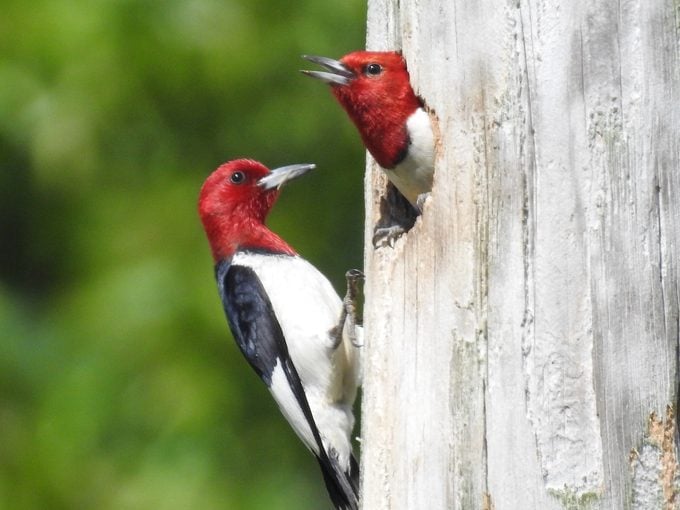
Flashing rich crimson, jet black and ivory white—the same bold colors found on a classic deck of cards—the red-headed woodpecker contrasts with the muted colors of its habitat.
“The red-headed woodpecker has very distinctive, large color patches with no variegating, striation or striping,” says Emma Greig, project leader at Project FeederWatch. This beautiful bird has a red head, a snow white body and inky black wings with white patches.
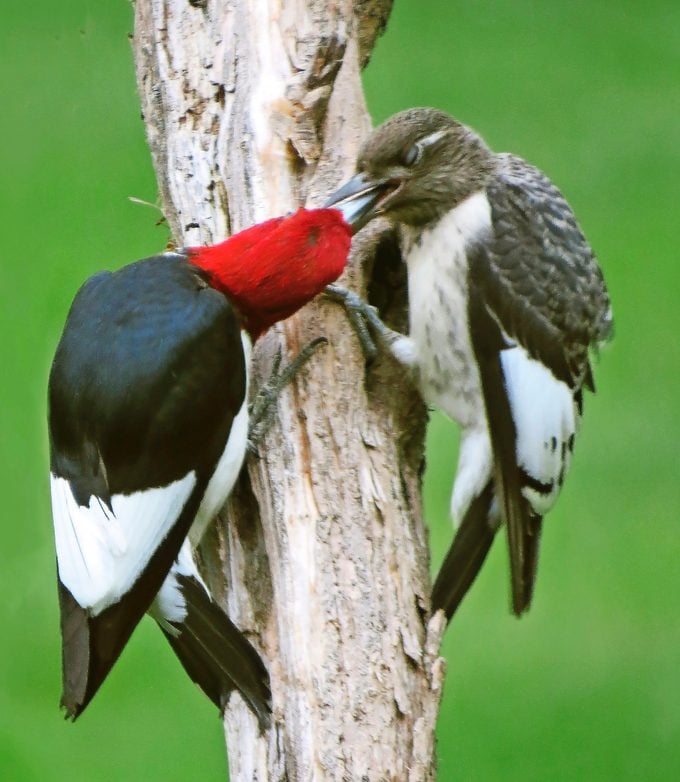
Both males and females sport the bold, bright colors. They measure 9-1/4 inches long with a wingspan of 17 inches.
Many woodpeckers have some red on their heads, including the common red-bellied woodpecker. Birders often mix up these similarly named birds. But the red-headed is one of the few with a full head of scarlet. The red-bellied woodpecker has a red crown and nape.
Not sure if you’re looking at a red-headed woodpecker or not? Learn how to identify more North American woodpecker species.
Juvenile Red-Headed Woodpeckers
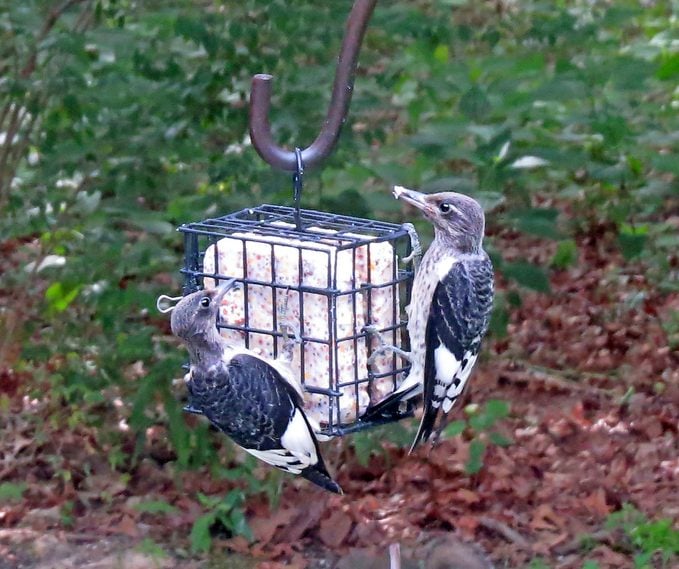
“Two springs ago, these birds (above) greeted us at our feeders. We think they’re juvenile red-headed woodpeckers. Is that correct?” asks reader Robert Tripp of Effingham, Illinois.
Birding experts Kenn and Kimberly Kaufman say, “Yes, you’ve got it. This can be a tricky ID, too. Since adult red-headed woodpeckers wear a simple design of solid black, white and red, it’s surprising to see all the intricate markings of brown on the juveniles.
However, that brown pattern probably makes good camouflage, especially when they’re sitting against tree trunks, still learning to watch for danger.
Juvenile red-headed woodpeckers don’t develop red on the head until sometime in their first fall or winter, and they may not have complete adult plumage until they are more than a year old.
Did you know: These baby woodpeckers leave the nest when they are about 27 days old.
What Do Red-Headed Woodpeckers Eat?
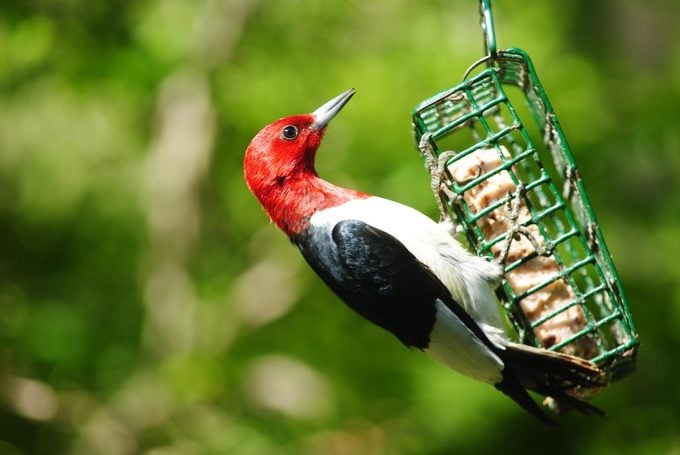
This brilliant bird is a rare sight at backyard feeders in the cooler months, but they will eat cracked sunflower seeds and suet. It’s more common to see them foraging on the ground or on tree trunks. They eat insects, corn, nuts (acorns, beechnuts and pecans, especially), and fruits such as apples, berries, cherries, pears, grapes, mulberries and even poison ivy fruits.
Attract more woodpeckers with their favorite foods.
Catching and Storing Food
Red-headed woodpeckers have the ability to catch insects while in flight. They can wedge live grasshoppers so tightly into crevices that the bugs are unable to break free. According to Cornell, this species is one of only four North American woodpeckers known to store food. Red-heads hide seeds, insects and other food in fence posts or under roof shingles.
Learn about another woodpecker that caches food: the acorn woodpecker.
How to Attract Red-Headed Woodpeckers
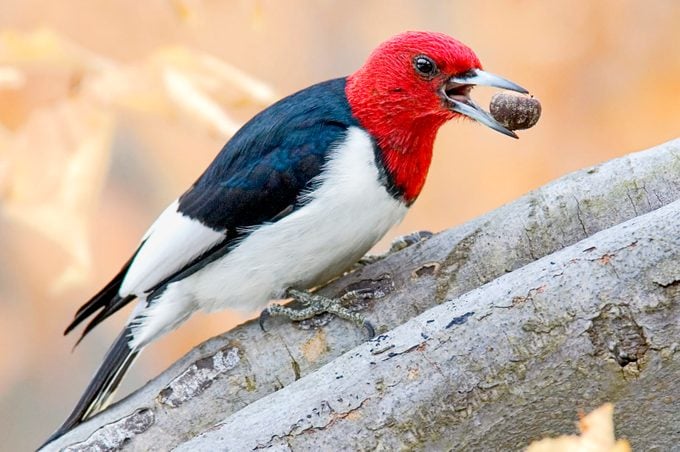
Keep dead trees around for as long as it’s safe to do so to entice these beauties to your backyard. You can also draw them in with deciduous woodlands with an understory for nesting and foraging.
Learn why woodpeckers peck and how to stop them.
Nest and Eggs
Red-headed woodpeckers are cavity nesters. They excavate a hole in live or dead trees, fence posts or utility poles. The female lays four to seven white eggs.
Learn how to tell the difference between downy and hairy woodpeckers.
Red-Headed Woodpecker Call
Listen to the red-headed woodpecker’s call. It sounds like a harsh “queeah, queeah, queeah.”
Bird songs provided by the Cornell Lab of Ornithology.
Learn how to identify a ladder-backed woodpecker.
Conservation Concerns
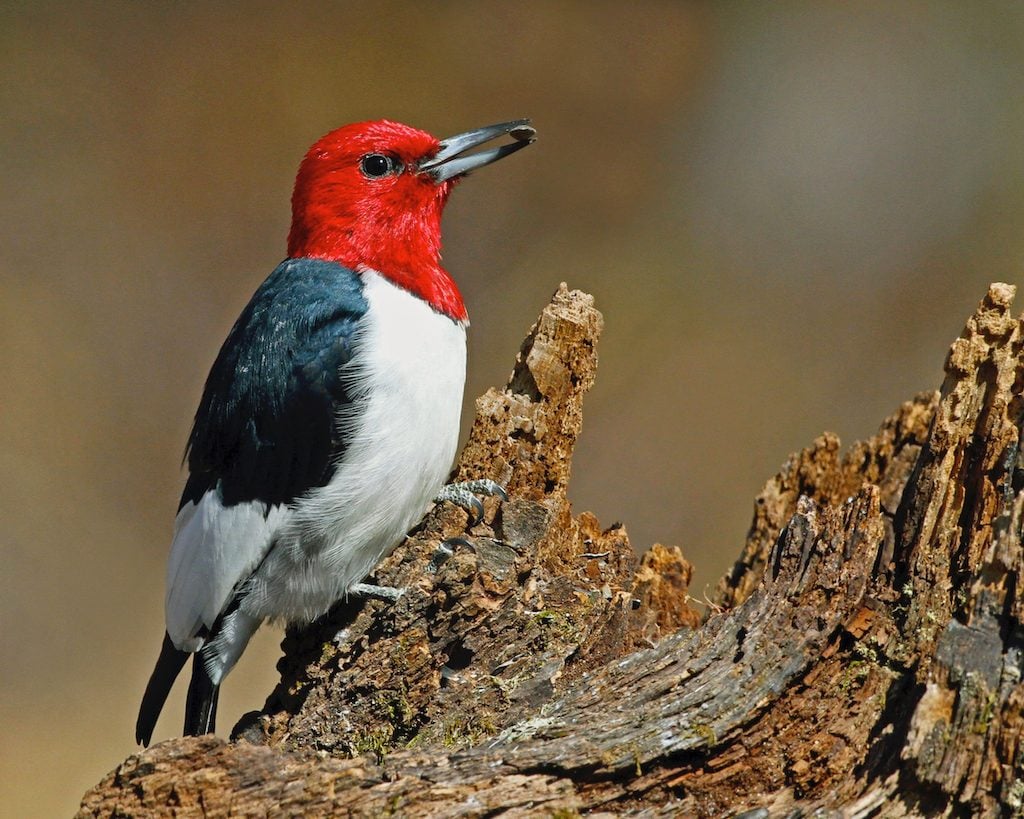
According to the North American Breeding Bird Survey, this species has experienced a cumulative decline of 70 percent between 1966 and 2014. Deforestation and habitat loss throughout its range are attributed to the decline of these birds.
Discover mind-blowing woodpecker facts you should know.
Red-Headed Woodpecker Range Map
Red-headed woodpeckers are found year-round within much of their range. But the species makes small migratory movements to winter grounds in southeastern states.
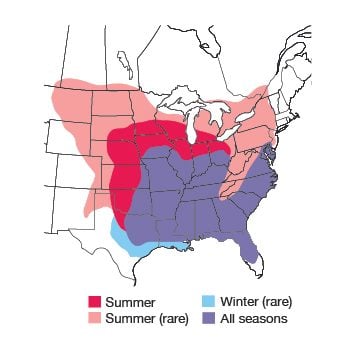
Range maps provided by Kaufman Field Guides, the official field guide of Birds & Blooms.
Next meet the sapsucker birds: woodpeckers with a sweet tooth.
